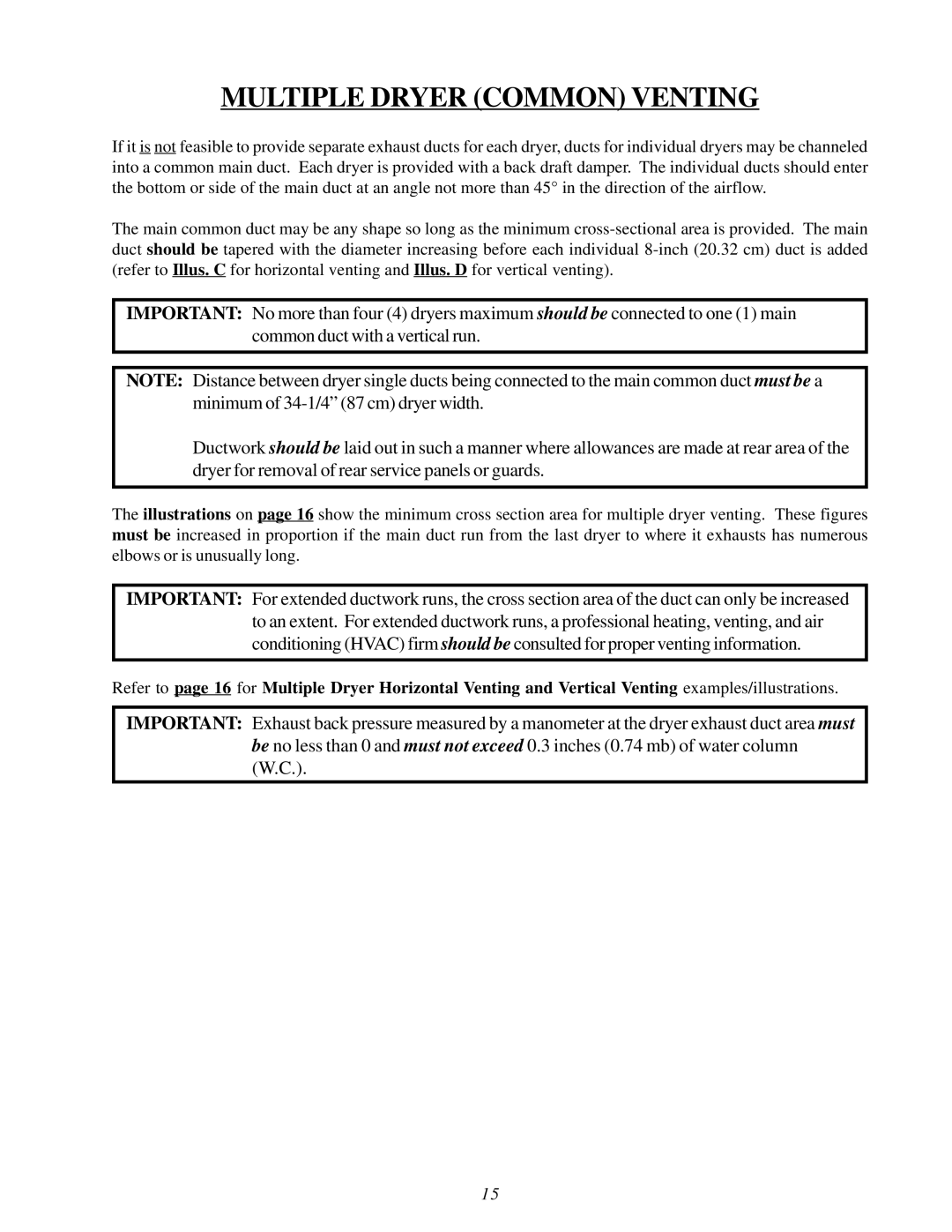
MULTIPLE DRYER (COMMON) VENTING
If it is not feasible to provide separate exhaust ducts for each dryer, ducts for individual dryers may be channeled into a common main duct. Each dryer is provided with a back draft damper. The individual ducts should enter the bottom or side of the main duct at an angle not more than 45° in the direction of the airflow.
The main common duct may be any shape so long as the minimum
IMPORTANT: No more than four (4) dryers maximum should be connected to one (1) main common duct with a vertical run.
NOTE: Distance between dryer single ducts being connected to the main common duct must be a minimum of
Ductwork should be laid out in such a manner where allowances are made at rear area of the dryer for removal of rear service panels or guards.
The illustrations on page 16 show the minimum cross section area for multiple dryer venting. These figures must be increased in proportion if the main duct run from the last dryer to where it exhausts has numerous elbows or is unusually long.
IMPORTANT: For extended ductwork runs, the cross section area of the duct can only be increased to an extent. For extended ductwork runs, a professional heating, venting, and air conditioning (HVAC) firm should be consulted for proper venting information.
Refer to page 16 for Multiple Dryer Horizontal Venting and Vertical Venting examples/illustrations.
IMPORTANT: Exhaust back pressure measured by a manometer at the dryer exhaust duct area must be no less than 0 and must not exceed 0.3 inches (0.74 mb) of water column (W.C.).
15
